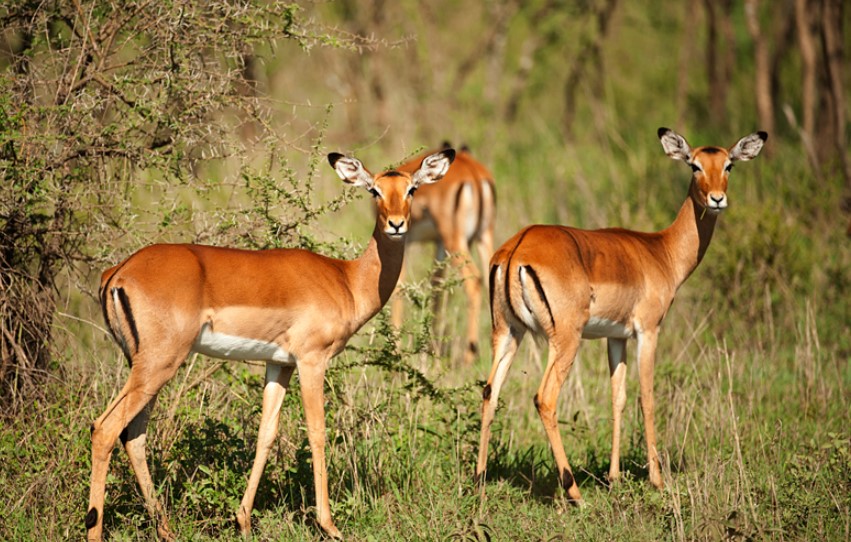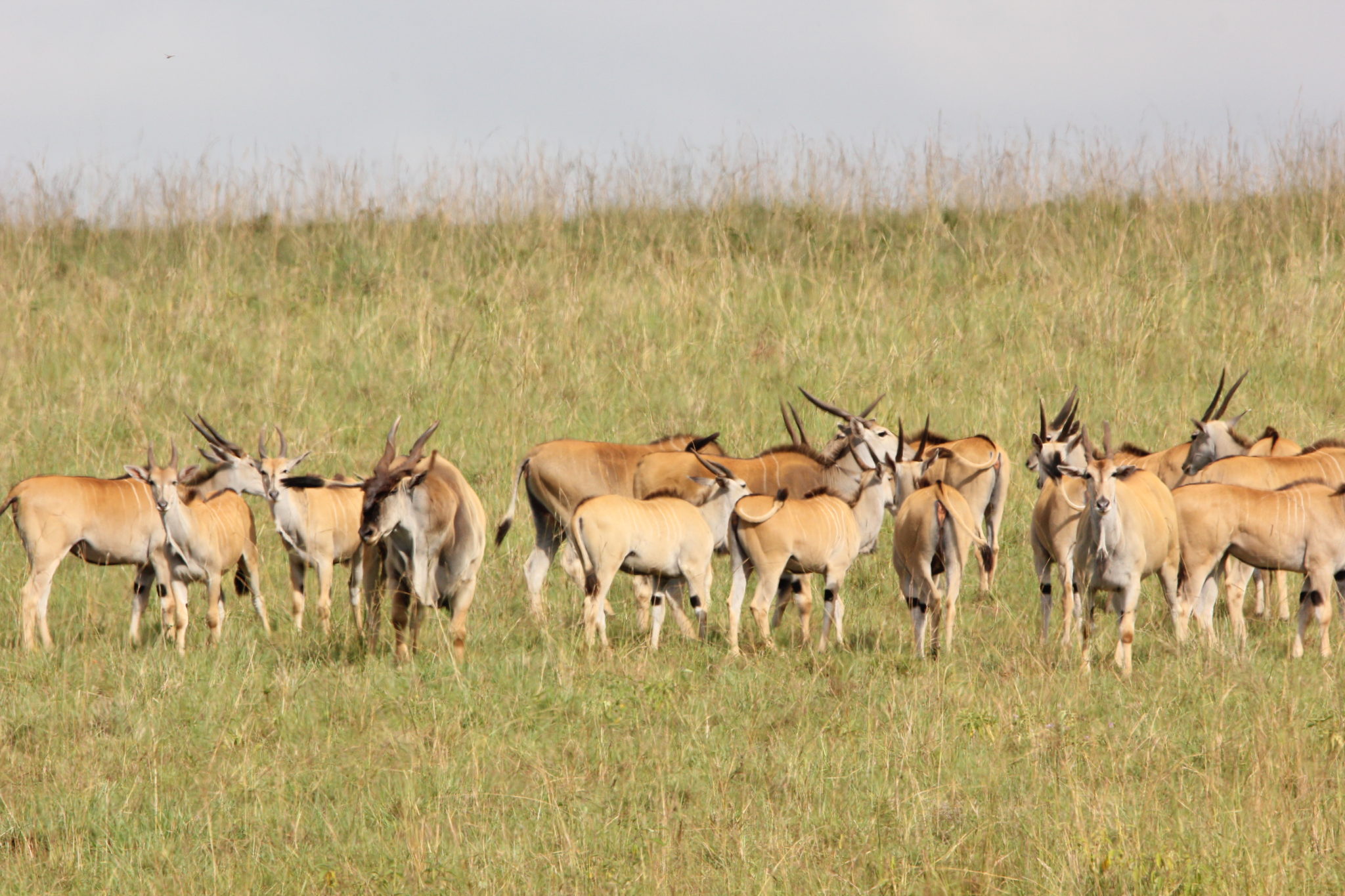Antelopes in Uganda: Diverse and Majestic Wildlife Heritage – Uganda, known as the “Pearl of Africa,” is a country blessed with abundant natural beauty and rich biodiversity. Among its most captivating and iconic wildlife species are the antelopes. With their grace, agility, and mesmerizing presence, antelopes play a vital role in the country’s ecosystem and contribute to its allure as a premier safari destination.
This article will explore the diverse species of antelopes found in Uganda and shed light on their significance in the country’s conservation efforts.
Uganda boasts a remarkable variety of antelope species, each adapted to different habitats and exhibiting unique characteristics. One of the most well-known and striking antelopes in Uganda is the Uganda kob (Kobus kob thomasi). This medium-sized antelope, endemic to Uganda, showcases a stunning reddish-brown coat, with the males sporting impressive curved horns.
The Uganda kob is primarily found in savannah grasslands, where they form large herds that migrate across the plains in search of fresh grazing grounds. These herds can consist of hundreds or even thousands of individuals, creating breathtaking spectacles during their synchronized movements.
Another prominent antelope species in Uganda is the impala (Aepyceros melampus). Although more commonly associated with East and Southern Africa, the impala has found a home in Uganda’s protected areas.
Recognizable by their elegant, reddish-brown coats and lyre-shaped horns, impalas are known for their remarkable leaping ability, effortlessly clearing obstacles in their path. They are often found in woodlands and open grasslands, forming mixed herds with other herbivores, contributing to the country’s vibrant ecosystem.
One cannot discuss antelopes in Uganda without mentioning the majestic eland (Taurotragus oryx). The eland, the world’s largest antelope species, can be found in several national parks and game reserves across Uganda.
These magnificent creatures possess a unique appearance with their long, spiral horns and distinctive dewlap. Elands are well-adapted to both grassland and woodland habitats, and their presence is a testament to the country’s commitment to wildlife conservation.
In addition to these notable species, Uganda is also home to several other antelope species, each contributing to the country’s rich tapestry of wildlife. The graceful topi (Damaliscus lunatus) can be found in abundance in Uganda’s savannahs, displaying a unique golden-brown coat and elongated horns.
The common duiker (Sylvicapra grimmia) is a small antelope species that thrives in Uganda’s forests, exhibiting impressive agility and camouflage. The elusive sitatunga (Tragelaphus spekii), with its distinctive long and spongy hooves for navigating marshy habitats, can be found in the country’s wetland areas.
Antelopes hold significant ecological importance in Uganda. As herbivores, they play a crucial role in shaping the landscape by consuming vegetation and facilitating seed dispersal. Their grazing activities help maintain the balance of plant communities and ensure the vitality of ecosystems. Furthermore, antelopes serve as a source of prey for larger carnivores, contributing to the intricate web of predator-prey relationships that exist within Uganda’s natural habitats.

Uganda has made commendable efforts to conserve its antelope populations and their habitats. The establishment of protected areas, such as national parks and game reserves, has played a pivotal role in safeguarding these remarkable creatures. Parks like Murchison Falls National Park, Queen Elizabeth National Park, and Kidepo Valley National Park provide critical sanctuaries for antelopes to thrive.
However, despite conservation efforts, antelopes in Uganda face numerous challenges. Habitat loss and degradation due to human activities, such as agriculture, urbanization, and infrastructure development, pose significant threats to antelope populations. The conversion of natural habitats into farmland and settlements reduces the available space for antelopes to roam and find food. This fragmentation of their habitats can lead to isolated populations, limiting gene flow and increasing the risk of inbreeding.
Poaching is another critical issue impacting antelopes in Uganda. The demand for bushmeat and illegal wildlife trade drives the hunting of antelopes for their meat, horns, and hides. Unregulated hunting, fueled by both local and international markets, puts immense pressure on antelope populations, pushing some species to the brink of extinction. Efforts to combat poaching through anti-poaching patrols, community engagement, and law enforcement are crucial for the survival of these magnificent creatures.
Additionally, human-wildlife conflict poses a significant challenge for antelope conservation in Uganda. As human populations expand and encroach upon natural habitats, conflicts arise when antelopes damage crops or compete with livestock for resources.
These conflicts can lead to retaliatory killings and a negative perception of antelopes among local communities. Implementing sustainable land-use practices, promoting alternative livelihoods, and developing strategies for coexistence are essential to mitigating human-wildlife conflicts and fostering harmony between communities and antelopes.
Despite the challenges, Uganda continues to make strides in antelope conservation. The country’s commitment to protected areas and wildlife management is commendable. Conservation organizations and government agencies work together to monitor antelope populations, conduct research, and implement conservation strategies.
Public awareness campaigns and education programs raise awareness about the importance of antelopes and foster a sense of pride and responsibility among Ugandans for their natural heritage.
Tourism also plays a vital role in supporting antelope conservation in Uganda. The country’s remarkable landscapes, diverse wildlife, and unique antelope species attract nature enthusiasts and safari-goers from around the world.
Revenue generated from tourism helps fund conservation initiatives, supports local communities, and incentivizes the protection of natural habitats. Responsible and sustainable tourism practices, such as controlled visitor numbers, guided tours, and adherence to ethical guidelines, ensure that the benefits of tourism are balanced with the conservation needs of antelopes and their ecosystems.
In conclusion, antelopes in Uganda contribute to the country’s remarkable biodiversity and are an integral part of its natural heritage. With diverse species, ranging from the iconic Uganda kob to the majestic eland, these graceful creatures captivate both locals and visitors alike.
Despite facing challenges such as habitat loss, poaching, and human-wildlife conflict, Uganda’s dedication to conservation, supported by protected areas and tourism, offers hope for the long-term survival of antelope populations. Preserving the habitats and ensuring the coexistence of humans and antelopes are essential for safeguarding Uganda’s treasured wildlife for generations to come.


Comment (0)